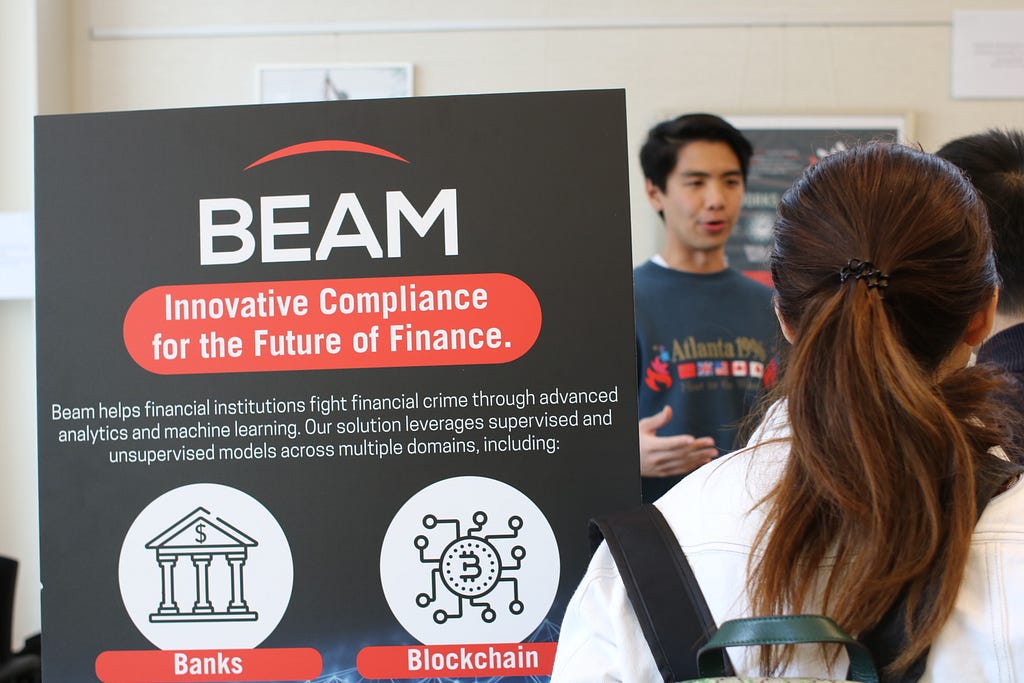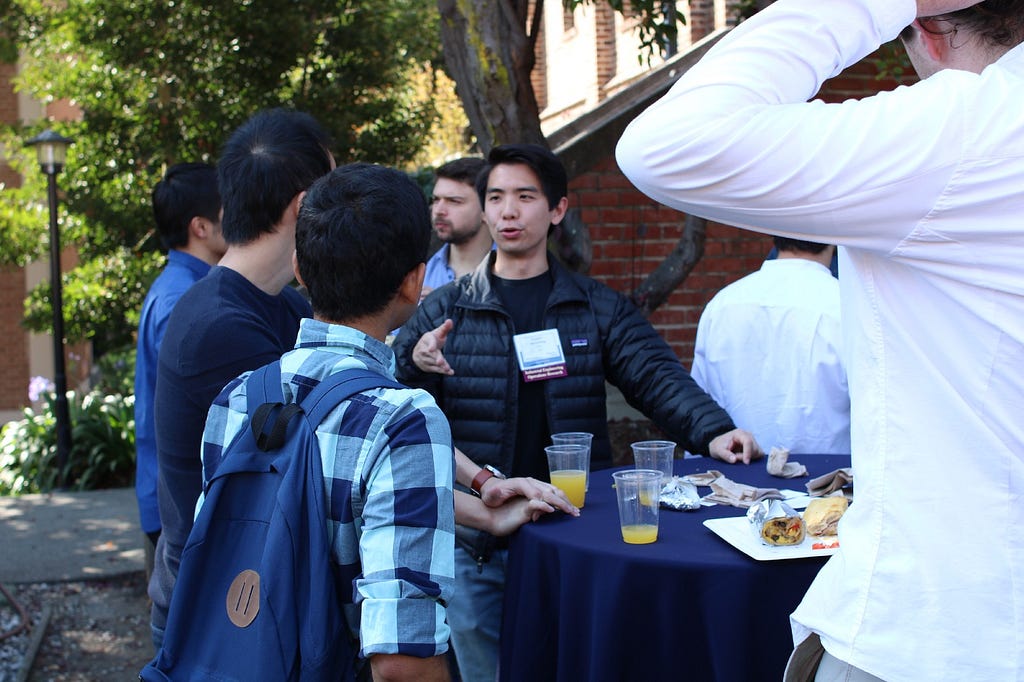Edited by Ashley Villanueva
Kevin Feng, Head of Data Science and Predictive Analytics at Beam Solutions, received an honorable mention for the 2019 MEng Capstone Industry Mentorship Award at the 2019 Berkeley MEng Capstone Showcase. The award recognizes the Capstone advisor who fosters intellectual independence, provides project support, and furthers professional development. We asked Kevin questions about his experience as an industry Capstone advisor and here’s what we learned.
What is your advising philosophy?
It’s important to be flexible in your advising approach based on who you’re working with. When I was in the program, my team only met with my advisor about five times over the course of the entire project and it was the ideal capstone experience for me — others might want a more hands-on experience.Ultimately, the most important thing for me was understanding my individual team members’ development goals and learning styles and empowering them with the knowledge and tools to best reach those goals.For our project, this meant provisioning access to a cloud environment to utilize distributing computing tools for the students to gain hands-on experience in “big data” analysis and providing insight into the end-to-end production data science life cycle.
What was the most memorable moment with your team?
We had the team come in to our office for a mid-year presentation to our entire company. It was at the same time that we were announcing our series A funding, so it was great to see the team present their progress over the course of the year and also have them be a part of one our biggest company milestones. With such a small team, everyone, from our founders to our capstone team members, played a role in where and and who we are today, so it was really nice that we were all together for that moment.What’s unique about Berkeley MEng students compared to students from other universities?
Aside from Berkeley attracting top engineering students from around the world, I feel that students here are extremely independent and free-spirited. Nobody seems particularly confined to just learning their required course content, or pursuing the careers their majors might dictate, or following whatever path someone else paved for them — everyone does their own thing.
What led you to propose an MEng Capstone project?
I felt that a Capstone project was a great opportunity to have a talented team of engineers explore a research need within our company. As an alum, I knew that our project would be mutually beneficial in terms of students building critical industry skills and Beam gaining valuable blockchain research insights.How did you go about recruiting your team?
We focused on students with passion and drive for our problem space that would fit well with our team culture and personalities. Students enter the program with varying levels of technical/industry experience and I’ve found the most success selecting candidates by team fit and natural potential rather than on exact skill set fit at the moment.What advice would you give to industry partners who’ll be advising a Capstone team in the future?
Make sure that your project strikes a balance between value add and level of urgency for your company. On one hand, you don’t want to hand over your most important research project with mission-critical deadlines knowing that the Capstone is a learning experience for students who develop their skills over the course of the year. On the other hand, you obviously want a meaningful project that will provide value to your organization and motivate students with an ultimate goal (in Beam’s case, a path to production). This was probably our biggest struggle, since project initiatives within startups tend to be mission-critical.How will your project be different next year / what are you planning on doing different next year?
At the start of our project this year, we were a seed stage company with 7 or 8 employees. We’ve since raised our Series A funding and have over doubled in size. With a much larger development team to provide mentorship from several different perspectives (data science, software development, etc.), our project next year will incorporate more aspects of the end-to-end data science life cycle up to production. It’s critical for data scientists to understand how their work integrates with live environments to actually provide value downstream, which can be hard to conceptualize without experiencing it first-hand.How did the Capstone team advance this technology? What was their major accomplishment? How can next year’s team continue the work?
Our Capstone team this year did a great job of taking a project with a huge scope and building out a data science framework to be scaled for further research and ultimately deployed in production. During the course of the project, the team was able to scale their local development (Python in Jupyter Notebooks) to big data infrastructure within our cloud (Spark in AWS). I consider this an immense accomplishment that allows future teams, whether internal or Capstone, to continue this research at a much larger scale.
Compared to other advisors, you have a unique vantage point — you’re an MEng graduate and you had your own Capstone project. How has this informed your approach to advising?
I think having a first-hand perspective on what drives students and what skills prospective data scientists want/need to develop has helped motivate how we designed the Capstone project and provided mentorship to the team.About Kevin’s Capstone team:

Machine Learning to Discover Frauds on the Bitcoin Blockchain
Using artificial intelligence to make cryptocurrency safer and financially compliant. Team: Anne Spitz [IEOR], Ines Mezerreg [IEOR], Parth Sanghvi [IEOR], Edward Tiong [IEOR] Project description: Cryptocurrencies, which are built on blockchain technology, solve the problem of double spending and digital authentication, giving legitimacy in its claims to be the future of transactions. However, since its introduction in 2009, Bitcoin has majorly grown to be associated with illegal activities over the deep web, including money laundering, human trafficking, weapons and drug sale, and terrorist financing. While there exist robust measures for detecting fraudulent transaction in the fiat money realm, there is no compelling equivalent for cryptocurrencies. This is where our project comes in: a technology that could filter or better flag transactions that might be involved in money laundering or other illicit activities. This technology could prevent banks from incurring billions of dollars worth of fines and, in the long run, might even reduce illicit activities that can be carried out with ease today, and finally help bitcoin be adopted as a legitimate currency. Connect with Kevin.Advisor Feature: Kevin Feng, Beam Solutions was originally published in Berkeley Master of Engineering on Medium, where people are continuing the conversation by highlighting and responding to this story.




